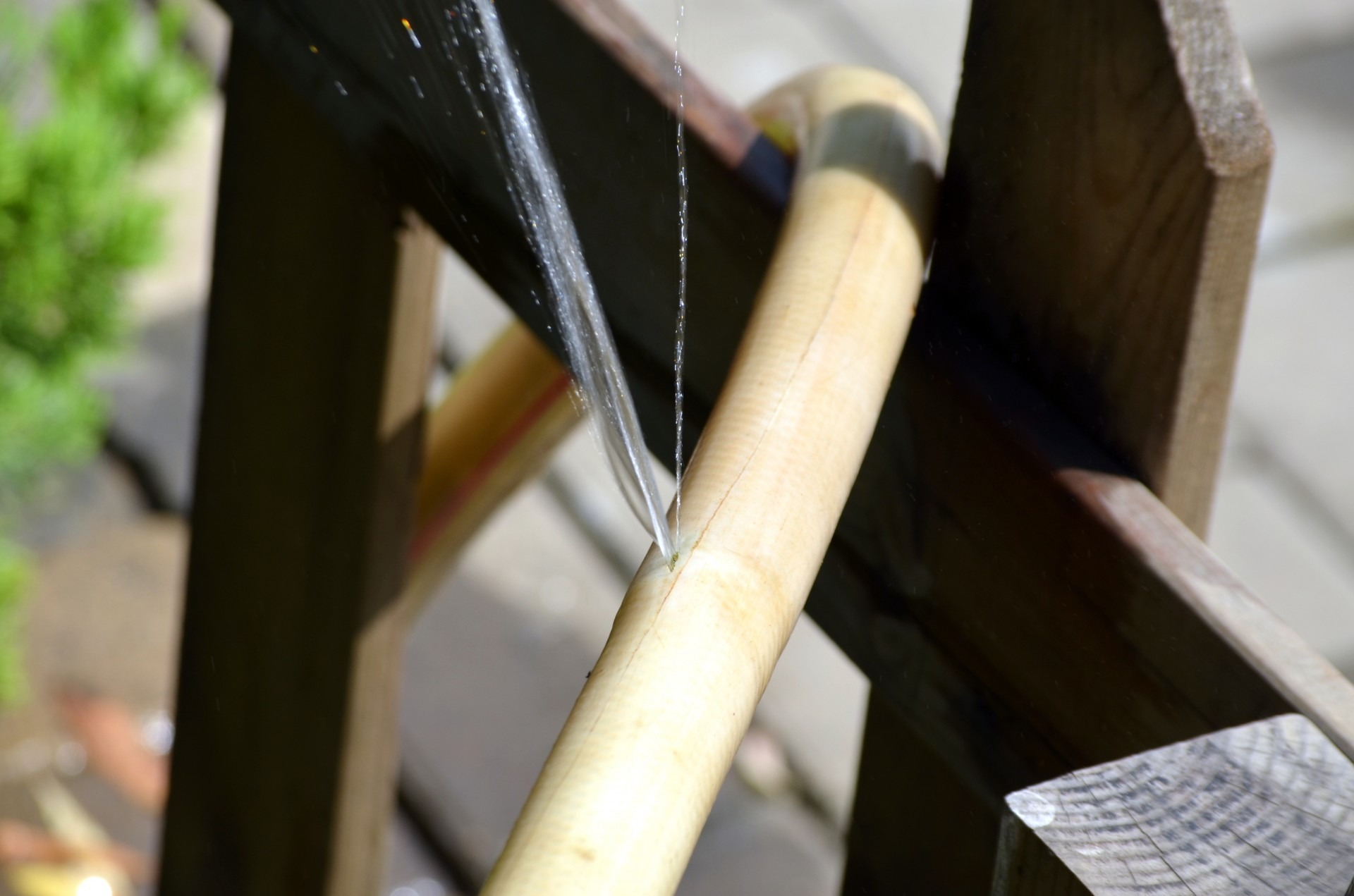Industrial Hose & Hydraulic Hose Repair
There are many reasons for repairing your high-quality hoses and hydraulic hoses rather than simply buying a new one. First, hoses and fittings can be expensive equipment, so repair is often a more economical option than buying a new one. Another reason for repairing a hose is that often you’re in a time-critical jam or can’t wait for a new hose, such as when your equipment has broken down on-site during a construction or farming operation. If you need to get up and running right away, fixing a hydraulic hose may be your best option, so you’ll probably find yourself running to the nearest hose repair shop.
Types of Damage
- Damage immediately behind the hose end: Anywhere you have a crimp, or banded connection naturally undergoes more stress when there’s any movement on the hose.
- Local external damage: Such as a scratch, dent, or impact damage.
- Overall external wear due to dragging: For example, in cleaning applications where the hose is regularly moved around and dragged on the ground or concrete. The other cause of external abrasion is simply the constant vibration of the hose in high-pressure applications. The vibrations from the pump cause it to rub on the ground and wear the outer coating. There’s not much that can be done to prevent this kind of damage—it’s the nature of this type of application.
- Long-term use fatigue: When your hose fails because it’s gotten old with use, you know you’ve gotten the maximum lifetime out of the hose.
Replacing the Crimp
It’s simple to replace a hose-end—but there are two caveats to this. First of all, it shortens the hose’s length, so it’s only helpful in installments where you can afford to have a slightly shorter hose.
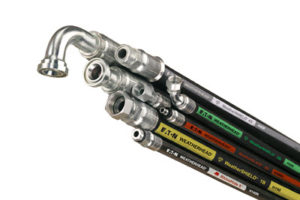 Secondly, particularly in fixing a hydraulic hose, it’s necessary to have the proper crimp spec. The crimp fitting is designed to meet SAE standards that guarantee the fit between the hose and end so the hose can withstand the high pressure required. What this means is that you need to have the ends from the same manufacturer as the hose. If you go to an Eaton Weatherhead manufacturer or supplier like TCH, we can only fit the Eaton Weatherhead hoses with Weatherhead ends. If you have Parker, Gates, or any other type of hose, you need to find a repair house that features those parts. Even the smallest deviation in the connection between the hose and end can cause a deterioration in performance, or even worse, be hazardous.
Secondly, particularly in fixing a hydraulic hose, it’s necessary to have the proper crimp spec. The crimp fitting is designed to meet SAE standards that guarantee the fit between the hose and end so the hose can withstand the high pressure required. What this means is that you need to have the ends from the same manufacturer as the hose. If you go to an Eaton Weatherhead manufacturer or supplier like TCH, we can only fit the Eaton Weatherhead hoses with Weatherhead ends. If you have Parker, Gates, or any other type of hose, you need to find a repair house that features those parts. Even the smallest deviation in the connection between the hose and end can cause a deterioration in performance, or even worse, be hazardous.
Often, we get people in our shop who want us to crimp to a different hose type, but it simply won’t work. Any decent repair technician will send you away if they don’t have the right match. Before you take a trip down to the repair shop, make sure they stock the manufacturer you need.
Making a Break
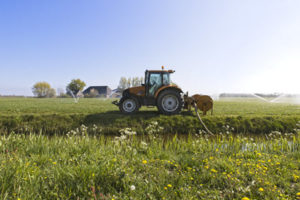 Often hoses will incur damage from impacts, such as a tractor running over the hose, a falling rock, or other impact types. The easiest way to deal with that kind of damage is by cutting and mending the hose. There are two ways to cut and mend a high-pressure or hydraulic hose.
Often hoses will incur damage from impacts, such as a tractor running over the hose, a falling rock, or other impact types. The easiest way to deal with that kind of damage is by cutting and mending the hose. There are two ways to cut and mend a high-pressure or hydraulic hose.
The first way is to use a mender by putting a physical piece inside the hose and crimping it on both ends. The other way to mend a hose is to put two threaded pieces on either side of the splice and put a coupler in the middle. Sometimes people try to repair their hoses with duct tape. That might reduce the spraying, but at 3000 PSI of pressured liquid inside of your hose, obviously, duct tape isn’t a safe solution.
The second method is to splice and repair when the damage gets too bad in one particular spot. It’s possible to splice multiple times, though it’s not ideal. Every time you splice and fix a hydraulic hose or any hose, it degrades the hose slightly, both in terms of the length and in terms of the pressure loss of the liquid running through the hose. For basic cleaning applications, that can be fine. But if you are doing high-pressure spraying for sanitation, you really don’t want to splice more than once. Why? As the hose’s function is reduced, the water pressure goes down, and the time for cleaning goes up.
We’ve seen hoses with as many as six splice and repair joints, which may seem like it’s saving money, but is probably more trouble than it’s worth if you’re doing serious work.
Watch for Abrasion and Exposed Wires
When it comes to local external damage, a hose can be fixed with a cover repair if you catch the problem early enough. If you immediately care for any scratch on the cover of a hydraulic or high-pressure hose, you can protect the reinforcement. All hoses have a protective cover that ensures the reinforcement wire doesn’t get damaged internally.
However, if you ignore scratches or dents, they can corrode, which leads to either full replacement, splicing, or repairing. If you see an abrasion or exposed wires and are trying to hold off on a full replacement, you can add plastic spiral guards, metal spiral guards, or abrasion-resistant plastic sleeves to protect the area that is damaged. What’s important is that you protect the reinforcement wires from additional abrasion and corrosion.
Long-Shot Saves
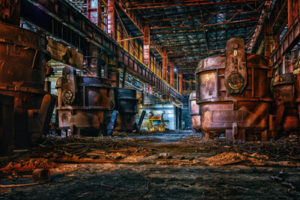 Situations, where you have to get your hose repaired right away, are common. Maybe your equipment has stopped right in the middle of a production run or during a harvest, and you can’t wait until the delivery of a new part. We understand. If it’s urgent, we find a way.
Situations, where you have to get your hose repaired right away, are common. Maybe your equipment has stopped right in the middle of a production run or during a harvest, and you can’t wait until the delivery of a new part. We understand. If it’s urgent, we find a way.
As an example, sometimes a hose and the port won’t be the same size. If there’s a small jump, say from 1 inch to 1.5 inches, we can find a fitting to reduce the size—but if it’s a big jump, like from 2 inches to half an inch, there’s a major mismatch. In a real emergency, we will fit a system with several stages of jumps from a larger to smaller or smaller to larger fitting. It’s not ideal, but if you’re really in a pinch, that is a repair that we’ve seen work at least temporarily until the system could be reconfigured.
A Hard Break: When It’s Time for a New Hose
When your hose is worn out from long-term, high-pressure use, it’s time to celebrate. You’ve gotten every last drop of use from your investment, and it’s time for a new hose. Wear and distortion can’t be fixed. When you have a hose, especially a hydraulic hose, the pressurizing and de-pressurizing of the tube eventually will reduce its ability to function and maintain high pressure. It’s worth remembering that there is no “forever hose” that lasts a lifetime. Even the highest quality hoses will wear out over extended use.
Conclusion
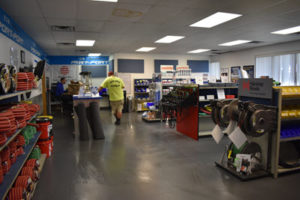 Industrial hoses and hydraulic hoses are designed for long-term use, and in many instances, replacement is a better option than fixing a hose. Hydraulic hose repair can extend the lifetime of a hose, get you out of a bind when something breaks down on a job site, or save a bit of money. Whatever the need, our service center is designed to get you back up and running when anything breaks down. The Hose Pros are standing by to help!
Industrial hoses and hydraulic hoses are designed for long-term use, and in many instances, replacement is a better option than fixing a hose. Hydraulic hose repair can extend the lifetime of a hose, get you out of a bind when something breaks down on a job site, or save a bit of money. Whatever the need, our service center is designed to get you back up and running when anything breaks down. The Hose Pros are standing by to help!
TCH Industries
Our focus and obsession is the distribution and fabrication of hose for industry and hose related products. Founded nearly 40 years ago, we are proudly owned and operated by the same family. Our manufacturing partners are some of the biggest and best names: Eaton, Parker, Dixon Valve, Hose Master, Brennen, Hannay Reels, and many others.
In short, we are a customer-centric hose company filled with happy professionals who can help you meet all your hose related needs. If you have any questions, please reach out to us by filling out the form below!

